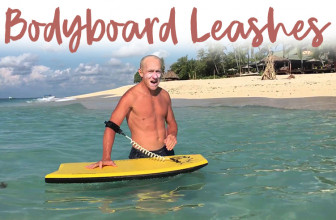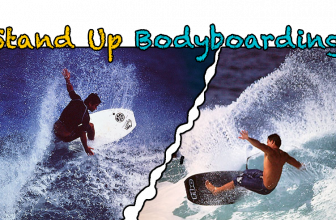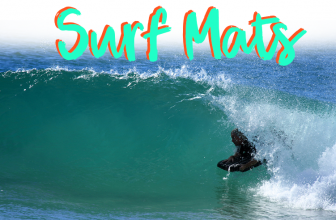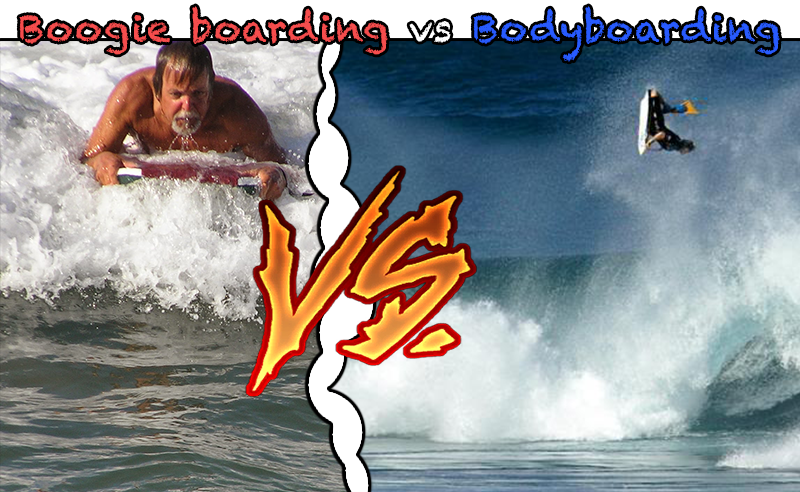
Don’t Make the Mistake!
As a surfer for over twenty-five years now, I recently got a lesson on the difference between bodyboards and boogie boards.
As most people probably do, I assumed the two were one in the same, and that there is no difference.
Boy was I wrong! Unless you know what you’re looking at, you might overlook the subtle differences just as I did!
More...
There’s a lot more to choosing a bodyboard or boogie board for wave riding than meets the eye. Aspects like shape, weight, material and thickness all come into play. Further, choosing the right board is a personal matter; you need to consider your height and weight, along with your skill level.
It’s no wonder I got the response I did out in the lineup when I said to a sponger, “that’s a cool boogie board." Here’s the lesson I got later on when I saw that kid again on the beach.
The “Morey Boogie” Board
The Morey Boogie brand was a foam board that allowed the rider to be in the water like a body surfer, and achieve the speed and maneuverability of board surfing.
The inventor, Thomas Hugh Morey, a manufacturer and engineer from Detroit, is essentially the father of bodyboarding.
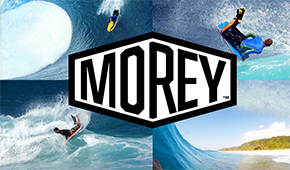
In 1971, when the Morey Boogie made its debut, it opened up a new way to ride waves – prone. In doing so, a new wave riding movement was born that picked up momentum all around the world. The original Morey Boogie was 45-inches long, 25-inches wide, 2.25-inches thick, and weighed 3.75-pounds. Today, the prone-riding board has evolved into many shapes and styles. Oh, and by the way, for the serious sponger, it’s called a bodyboard.
Morey Boogie's breakthrough flagship board was called the Mach 7. To read our full review click here.
What IS the difference? Bodyboard VS Boogie Board
My lesson on the beach that day started with a review of the board itself.
The 1971 Morey Boogie was the original bodyboard. Today, the bodyboard has come a long way, with improvements to original features in order to advance the board’s wave riding capabilities.
The first thing I learned, is that you can find a boogie board at any general retail outlet that sells cheap foam boards, but you’ll only find bodyboards at surf shops that sell expensively manufactured boards.
A bodyboard is for the amateur wave rider as well as the professional, and everything in between.
If you’re passionate about this activity and you spend a considerable amount of time in the water, get a high quality, well manufactured bodyboard, suited for your weight and sized for your height so you can spend hours in the water having fun and doing so in comfort.
The specialized shape and quality of materials used to make them, determines the wave riding strengths and capabilities with pulling off tricks.
A boogie board is for the beginner and especially fun for small children. If you’re just getting your feet wet, or you only get out on small days periodically, then this type of board will suit you just fine. The design and build of low quality foam boards are not for for big wave days. Rather, boogie boarding is more often enjoyed bouncing around in white water.
Our #1 Recommended Bodyboards
#1 Adult Bodyboard
Morey Mach 7-
- All Around Classic
-
- Experience Level: Beginner to Advanced
-
- Length: 37, 40, 41, 42, 43 Inch
#1 Kids Bodyboard
Lucky Bums-
- Perfect Kids Weekend Warrior Board
-
- Experience Level: Beginner
-
- Length: 33, 37, 41 Inch
#1 Advanced Bodyboard
Mike Stewart Science Style-
- High Performace Pro Board
-
- Experience Level: Intermediate to Advanced
-
- Length: 40, 41, 42, 43 Inch
What is Bodyboarding?
My lesson continued and I found out that bodyboarding is considered an extreme sport.
There are worldwide bodyboarding competitions! Both men and women compete. Bodyboarding is for the serious wave rider! Waves generate a lot of force – this I know.
Bodyboards can handle the consequences of a heavy wipe out. Additionally, bodyboarders can get deep in the pocket of a wave.
They can take off in spots and even ride waves that surfers cannot. Bodyboarding techniques include riding prone, dropknee and stand-up.
What is Boogie Boarding?
The inexpensive, hard foam, square-like boards you find for use at seaside vacation rentals, or sold at general retail shops, are more commonly called boogie boards.
These boards are perfect for just playing around in the water.
Boogie boards are great for small summer waves or water fun for everyone during a weekend beach outing.
You don’t need technical skills or specialized accessories – most anyone can do it!
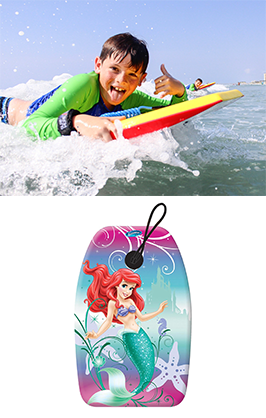
What did I learn?
If you take your board riding seriously, you’ll find a plethora of bodyboards and accessories out there to help advance your skills and to withstand the ocean’s abuse. If you’re more into lazy weekend water time, get a boogie board.
Lesson learned!
FAQ
Do you ever bash knees during a free fall onto the shallow ledges of reef or rocks nearly sucked dry by the wave you’re catching?
With a bodyboard, you are able to surf a nearly dry surface, mainly because you have no fins to catch on anything. As long as there is enough water to maintain buoyancy, you won’t bash body parts.
What is a reasonable size limit for waves that a body boarder can catch, using his own paddling power?
The maximum limit might be about 20-feet, given that bodyboards wouldn’t generate sufficient speed to stay in front of the wave, and your body would take a beating from bouncing down the enormous face. A solid 6-8 foot wave would be a more reasonable limit.
Are there different sized bodyboards for different sized waves?
The size and style of your bodyboard should fit your body and your surfing style. Board size may help, but low center of gravity is really the key to getting into waves.


